Idea by
Jurek Brüggen
undjurekbrüggen
Call for ideas 2021
WBM+
WBM+
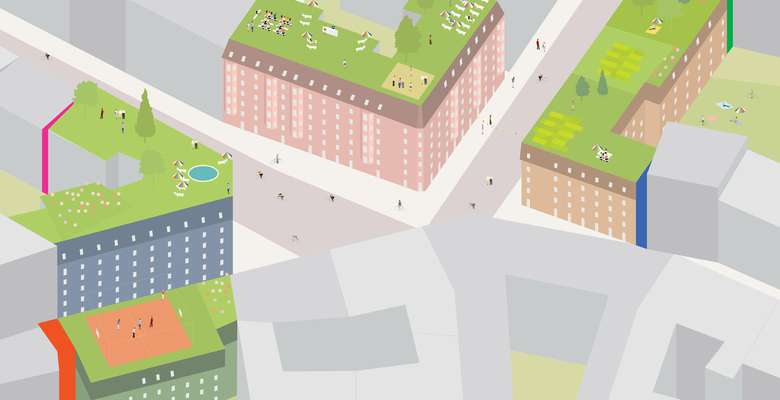
- Systemic changes
In this project architecture is not about building new objects but rather about the reorganisation of existing urban structures. With only few built interventions in the district, large areas of living space for new residents are created in existing buildings.
It enables generous densification. The building fabric is used more efficiently - resources are saved.
WBM+ is a project for a different, communal life in cities. People cultivate hobbies, have children, host friends, celebrate parties, work on projects. It requires extra spaces that are only used occasionally. In dense city centres with raising rents this is becoming increasingly difficult. Providing all these extra spaces for the neighbourhood in new structures, WBM+ will allow residents to reduce their private living space. Rents would decrease while gaining additional usages. Consequently, it creates additional dwelling area for new inhabitants in existing houses.

An area of 5 min walking distance in diameter in the inner city of Berlin serves as an exemplary site. The project was developed together with the communal housing association WBM (Wohnungsbaugesellschaft Berlin Mitte). Its properties are the basis for the design. Berlin faces a great housing shortage and especially in the inner districts prices are raising drastically.
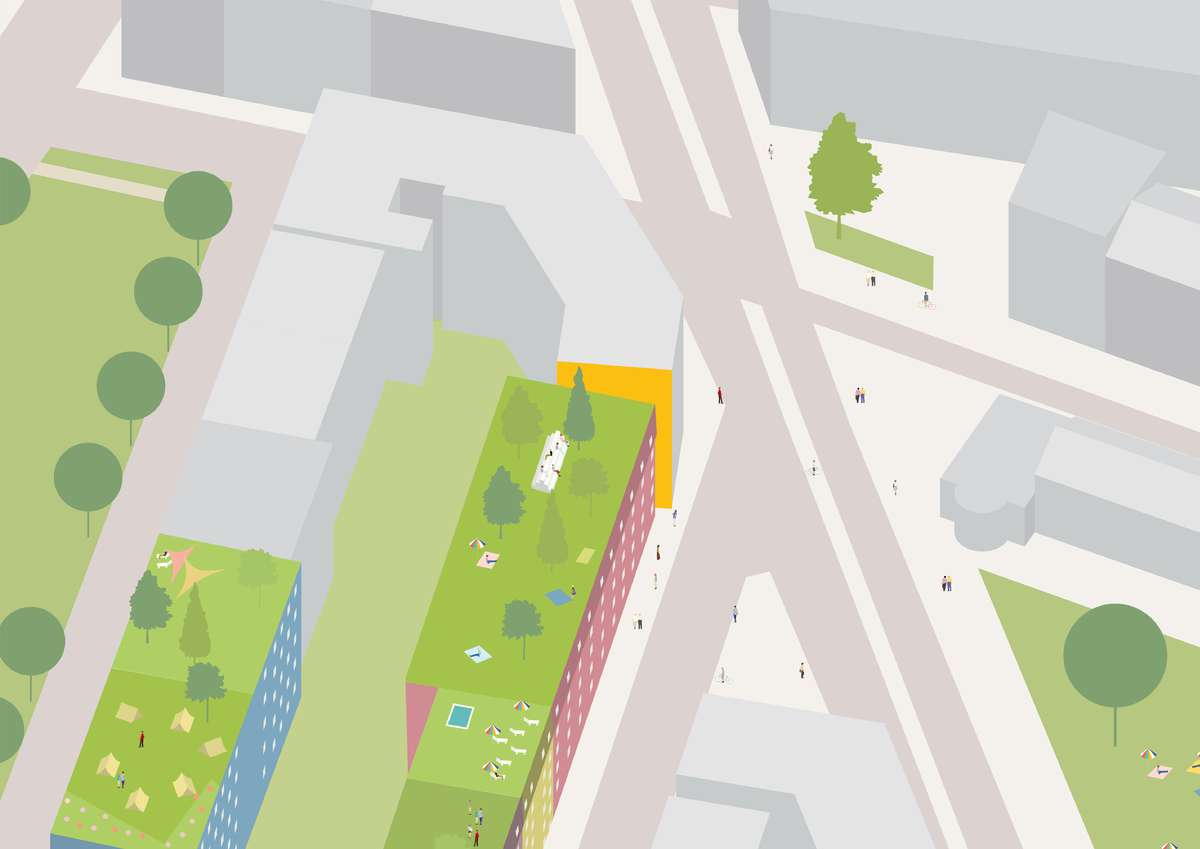
In the immediate vicinity of each existing flat, communal, shared extra spaces are to be built in vacant lots which are too small for normal housing. Flat roofs become shared terraces and gardens. In this way, the flat is extended to the neighbourhood. The neighbourhood becomes a house with many residents.
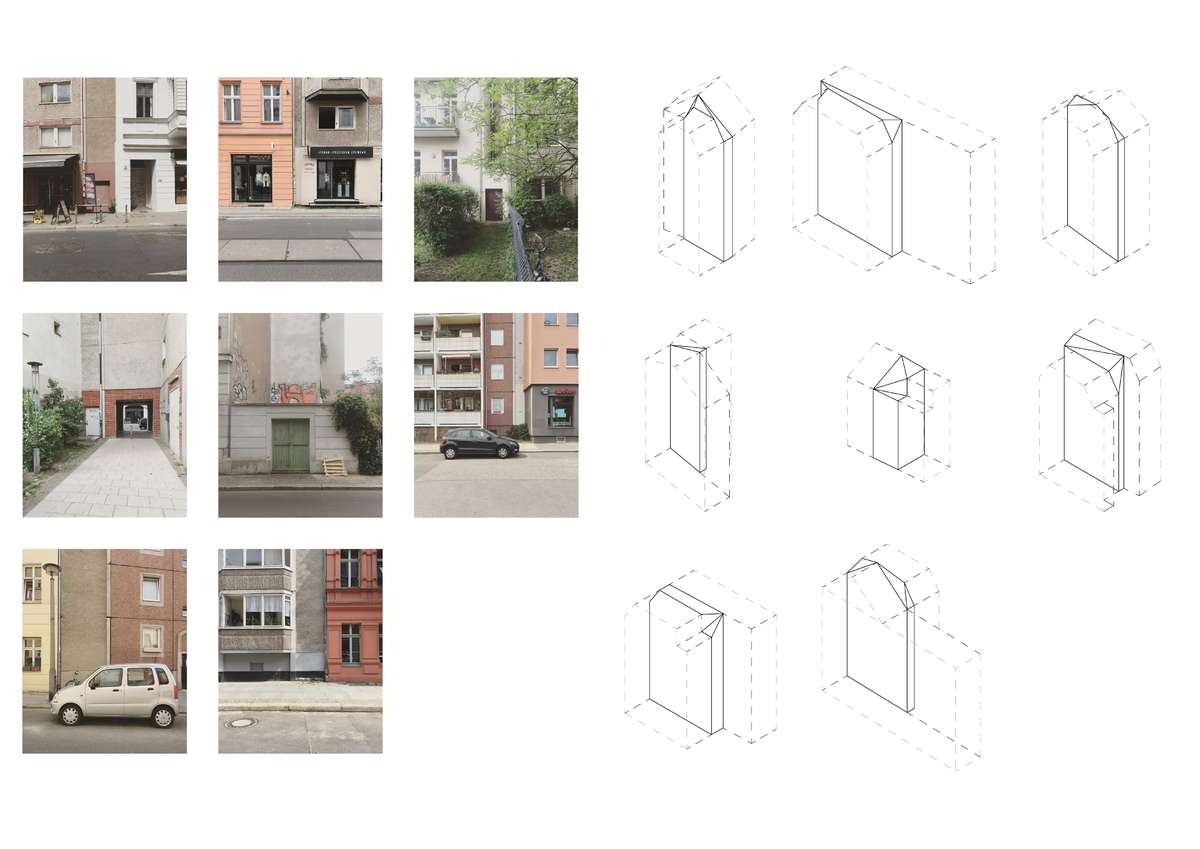
Around 1980 the German Democratic Republic (former East Germany) started to fill inner city plots with prefabricated houses. Since they were based on standardised elements, small gaps were left out between them and the old existing building structures. These lots will host the new buildings of WBM+ with their commonly shared extra spaces.
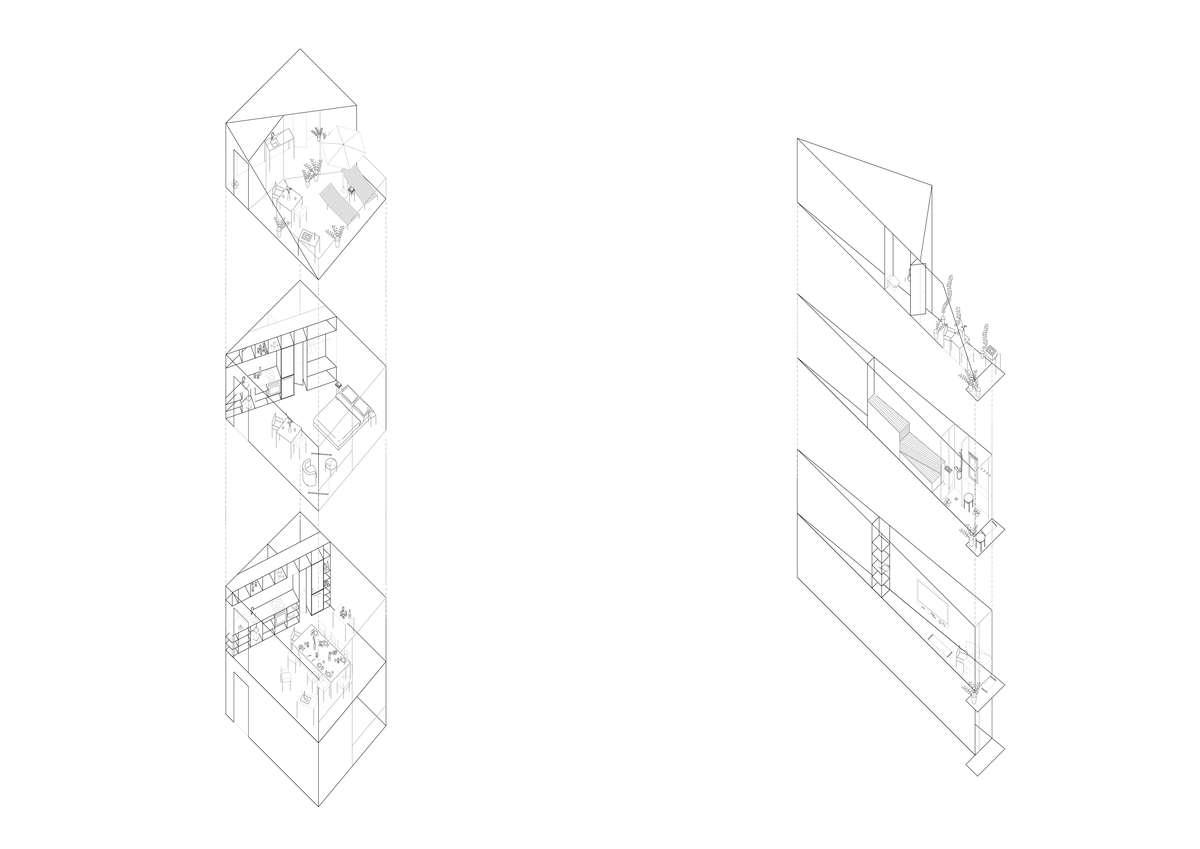
These are two of them - the widest and the narrowest. As they are too narrow for residential use, the structures house the communal and shared extra spaces.
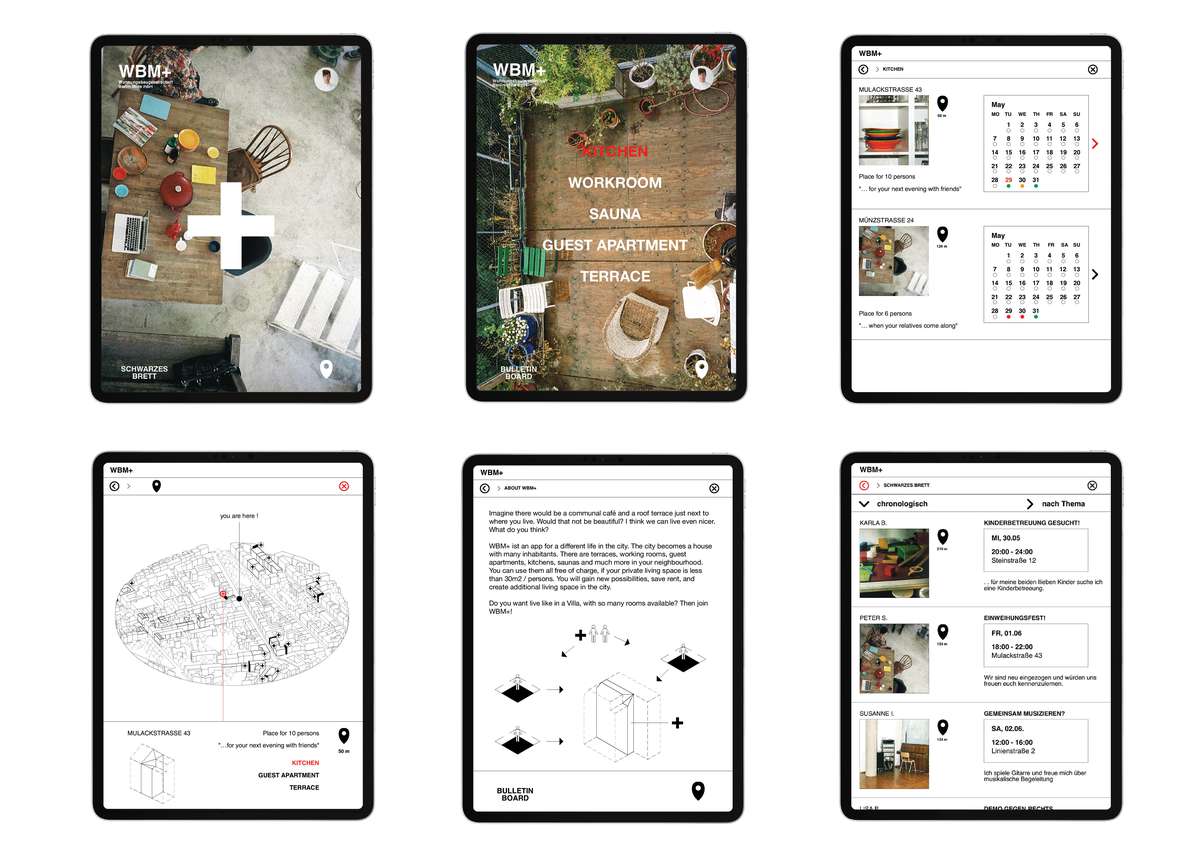
The basis of WBM+ is an app that can be used to book extra spaces that have been built in the surrounding area. Residents can also use this app to arrange meetings, exchange information or offer each other help.
WBM+
WBM+

- Systemic changes
In this project architecture is not about building new objects but rather about the reorganisation of existing urban structures. With only few built interventions in the district, large areas of living space for new residents are created in existing buildings.
It enables generous densification. The building fabric is used more efficiently - resources are saved.
WBM+ is a project for a different, communal life in cities. People cultivate hobbies, have children, host friends, celebrate parties, work on projects. It requires extra spaces that are only used occasionally. In dense city centres with raising rents this is becoming increasingly difficult. Providing all these extra spaces for the neighbourhood in new structures, WBM+ will allow residents to reduce their private living space. Rents would decrease while gaining additional usages. Consequently, it creates additional dwelling area for new inhabitants in existing houses.
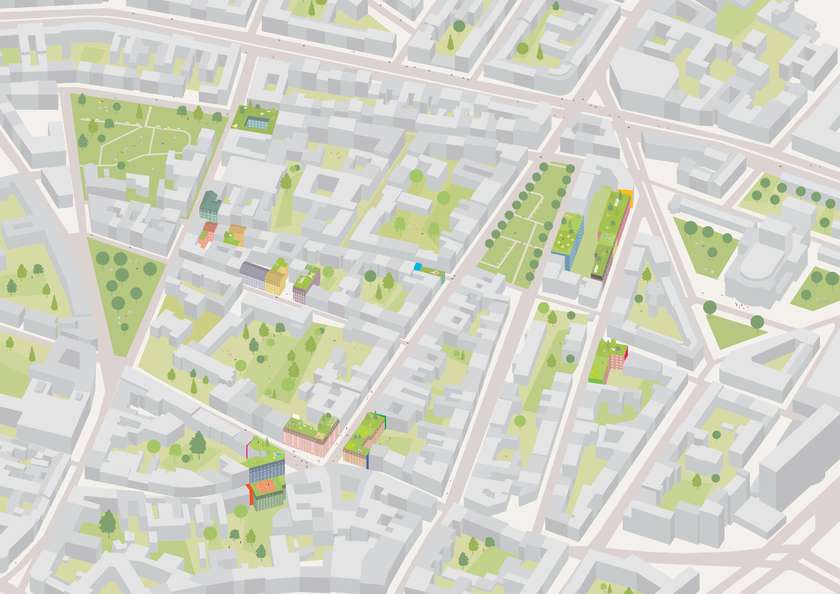
An area of 5 min walking distance in diameter in the inner city of Berlin serves as an exemplary site. The project was developed together with the communal housing association WBM (Wohnungsbaugesellschaft Berlin Mitte). Its properties are the basis for the design. Berlin faces a great housing shortage and especially in the inner districts prices are raising drastically.
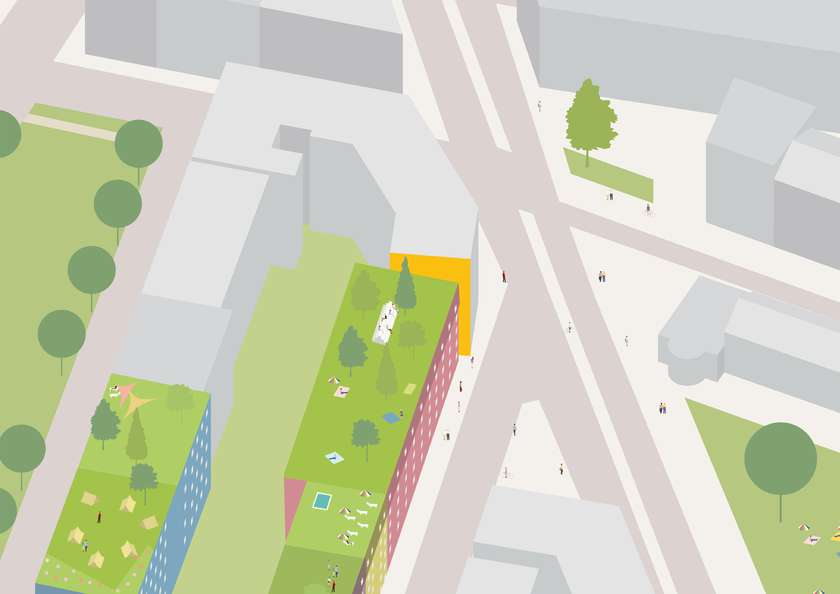
In the immediate vicinity of each existing flat, communal, shared extra spaces are to be built in vacant lots which are too small for normal housing. Flat roofs become shared terraces and gardens. In this way, the flat is extended to the neighbourhood. The neighbourhood becomes a house with many residents.
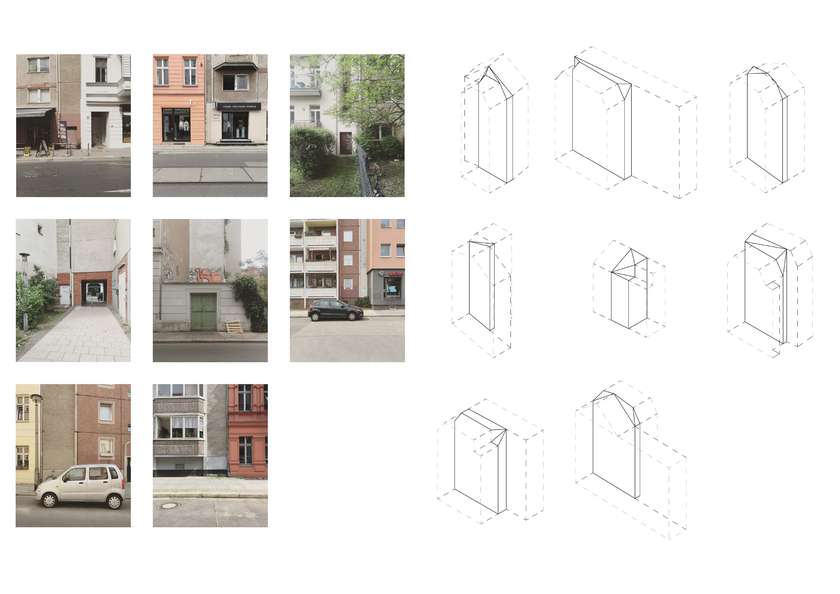
Around 1980 the German Democratic Republic (former East Germany) started to fill inner city plots with prefabricated houses. Since they were based on standardised elements, small gaps were left out between them and the old existing building structures. These lots will host the new buildings of WBM+ with their commonly shared extra spaces.
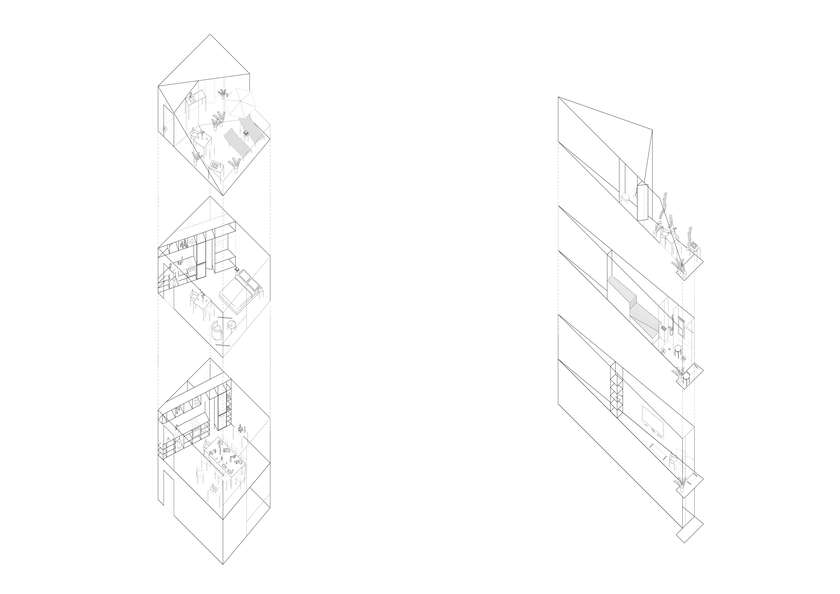
These are two of them - the widest and the narrowest. As they are too narrow for residential use, the structures house the communal and shared extra spaces.
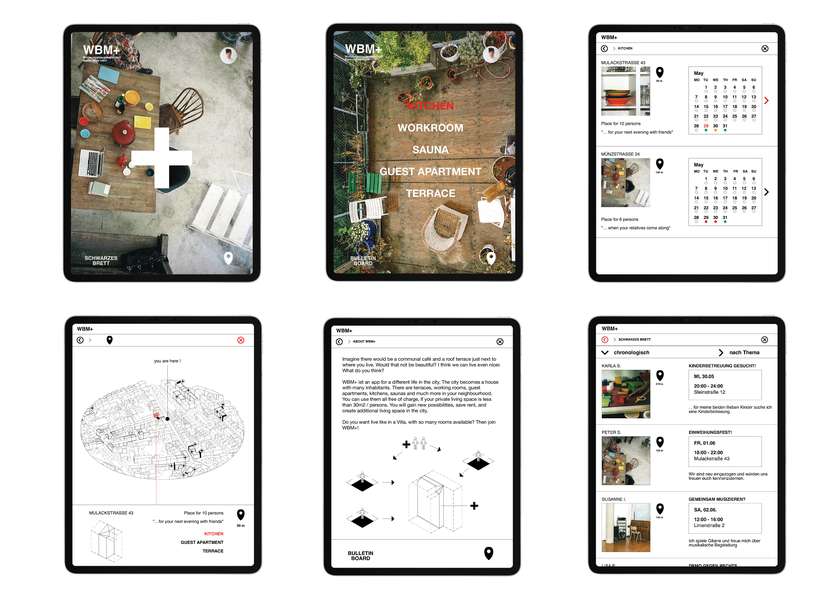
The basis of WBM+ is an app that can be used to book extra spaces that have been built in the surrounding area. Residents can also use this app to arrange meetings, exchange information or offer each other help.